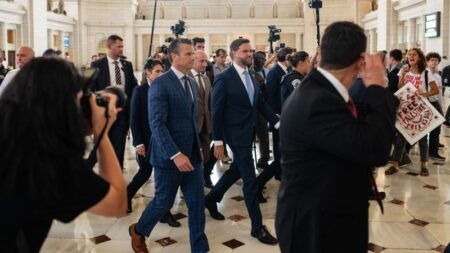The landscape of the Supreme Court is on the brink of substantial change as it prepares to reconvene this fall, with numerous pivotal cases looming on its docket. Among these cases are appeals seeking to overturn established precedents, including significant decisions made regarding voting rights, religion, and the limits of executive power. In particular, the court will have the opportunity to reassess previous rulings that have sparked widespread debate and outcry, particularly from those who argue these precedents are outdated or poorly reasoned.
Historically, the Supreme Court has approached the matter of overturning its decisions with restraint, prioritizing legal stability. Under Chief Justice John Roberts, the current court has shown a cautious approach towards modifying existing laws, averaging just 1.5 instances of overturning precedents per term since he took the position, compared to 2.9 times under previous chief justices. However, the remarkable 6-3 conservative majority on the court has recently deviated from this trend, actively overturning precedents on issues ranging from abortion rights to affirmative action.
Among the critical cases that could undergo reconsideration this term is *Humphrey’s Executor v. United States*, a 1935 decision that protects the independence of certain federal agency leaders from political dismissal by the President. Under examination is whether Congress has overreached in enacting laws that allow for these protections. Legal scholars, such as Georgetown Law Professor Victoria Nourse, suggest that the court could soon invalidate this precedent, especially considering recent emergency orders that favored political appointments and removals by the Trump administration.
Another prominent case being monitored involves political funding, specifically the 2001 case *FEC v. Colorado Republican Federal Campaign Committee*, wherein the court is set to review limits on political party expenditures in coordination with federal candidates. Critics fear that if the court finds in favor of the appeal led by Republican challengers, it could drastically upheaval campaign finance laws, leading to potentially unlimited funding and influence in elections.
Additionally, the Supreme Court’s decision on the case of Kim Davis, a county clerk who faced legal repercussions for refusing to issue marriage licenses to same-sex couples, has raised questions about the future of *Obergefell v. Hodges*, the landmark ruling that legalized same-sex marriage nationwide. Davis’s appeal rests heavily on religious grounds, arguing that the court should revisit its prior verdict due to its supposed conflicts with her religious convictions.
Moreover, issues surrounding race and redistricting have surfaced as Louisiana’s congressional district map enters legal scrutiny. The court will assess whether the drawing of a second majority-Black district violates the 14th Amendment, a case that could significantly impact how voting rights are protected under U.S. law. This situation has the potential for broader implications for the Voting Rights Act, specifically regarding a key ruling from 1986 which recognized the protection of minority voting power.
On yet another front, the Supreme Court is considering challenges to the so-called Feres Doctrine, limiting military personnel’s ability to sue the government for injuries sustained during service. This doctrine has been criticized for its excessive protections for the government, effectively barring service members from seeking legal recourse for incidents such as negligent accidents involving government vehicles. Voices from both conservative and liberal factions advocate for its reassessment.
Litigation regarding religious freedoms has also gained traction, with prominent religious organizations lobbying to overturn a long-standing precedent that prohibits student-led prayers at public school athletic events. Given the recent judicial trends favoring expressions of religious belief in public settings, there is heightened anticipation regarding how the court will approach these appeals.
As the Supreme Court embarks on a new term, its decisions will not only influence existing legal frameworks but will also resonate through the socio-political landscape of the United States. Convincingly, the upcoming rulings underscore the enduring tension between theory and practical implications, reflecting the diverse and often polarized perspectives within contemporary American society. This term promises to be consequential, and the ramifications of its decisions could reshape the legal contours of territory ranging from voting rights to institutional and religious autonomy.










